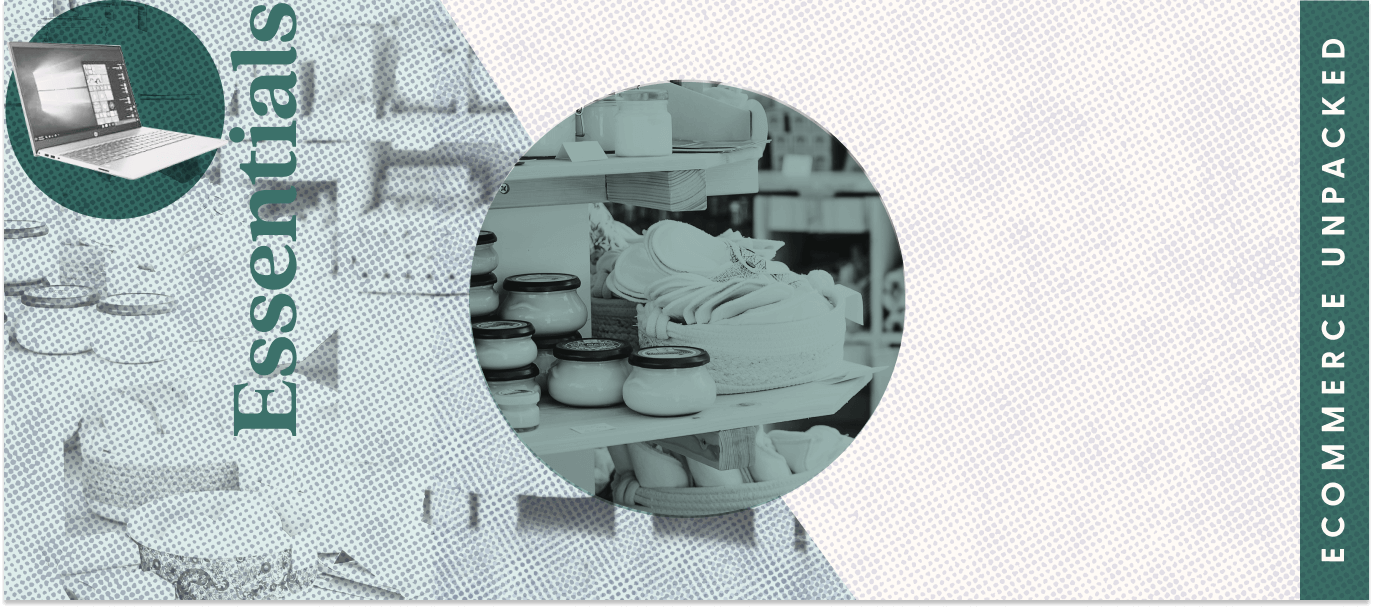Bringing new customers to your Shopify ecommerce store is exciting. It proves demand for your products or services, and suggests your marketing is having a positive effect. To achieve long-term success, however, it’s crucial that you retain customers, bringing them back for future purchases.
Harvard Business Review reports that acquiring a new customer is between 5 and 25 times more expensive than retaining one you already have. What’s more, research by consulting firm Bain shows increasing customer retention rates by just 5% increases profits by 25% to 95%.
Additionally, those loyal customers tend to spend more money. A common rule of thumb is that 80% of a company’s profits come from about 20% of customers. Your new customers could become your best customers, capable of keeping your Shopify store profitable.
Curious about how you can retain more customers and increase customer loyalty? In this article, we’ll share five customer retention strategies you can use to up your Shopify customer retention rate.
Key takeaways
- Customer retention is vital to the profitability of Shopify stores.
- There are numerous methods business owners can employ to help boost their customer retention rates, including improving the customer experience, incentivizing referrals, making personalized product recommendations, creating a loyalty program, and offering subscription services.
- It’s crucial to accurately measure customer retention rates to monitor the effectiveness of your efforts.
Why customer retention is vital for your ecommerce store
A study from Bain & Company suggests that ecommerce companies won’t break even on one-time shoppers. In other words, you need existing customers to come back to recoup your acquisition expenses.
Selling to existing customers isn’t just more profitable; it also tends to be more effective. Marketing Metrics estimates that you’re up to 14 times more likely to convince an existing customer to buy from you than you are to sell to someone new.
Your customer retention rate can also influence your new customer outreach. The more existing customers come back, the more capital you’ll have to spend on marketing to new customers.
What customer retention metrics should you check?
The best customer retention strategies start with data. Plenty of Shopify customer retention apps are available to help you gather and analyze customer data. Tools like Reveal and Klaviyo are ideal for this purpose. Shopify also offers an array of data dashboards.
Let’s dig into what kinds of information you should gather with your Shopify customer retention app.
Repeat customer rate
Shopify’s repeat customer rate dashboard measures the percentage of your existing customers who are willing to make a second purchase. The higher the metric, the better your retention rate.
If this number is low, it means you’re spending more on customer acquisition. Perhaps your user experience isn’t ideal, or maybe you’re not shipping orders fast enough. Keep an eye on repeat customer rate to ensure you’re keeping the customers you have, and solicit their feedback to ensure you can mitigate any issues they might be facing.
Purchase frequency
Measure how often someone buys from your store within a set period, and you’ve measured purchase frequency. While this is an important metric, it’s also highly variable among different product categories.
For example, in the automotive industry, where customers might shop for a car every 3-5 years, a purchase frequency measurement of 5 years might be ideal. In the fashion industry, a monthly or quarterly purchase frequency is likely more telling.
To ensure you’re achieving the right purchase frequency, deep into your product data. How long do your items last? How many variants of a product do you offer? Do people need more than one of the same thing? Answering these questions can help you set the proper metrics to accurately measure your purchase frequency.
After you’ve determined the ideal measuring period, your equation looks like this:
Purchase frequency = Number of orders/number of customers (without duplicates)
AOV (average order value)
Your AOV measures how much your average customer spends in a single transaction when they hit the checkout button on your Shopify store. It’s a simple-seeming metric that in fact can help reveal the long-term viability of your product.
Forbes reports that existing customers are 50% more likely to try one of your new products. If your AOV climbs month over month, you’ve likely hit on repeat customers, and you’re using upsell techniques to get them to buy more each time they visit.
Your AOV equation looks like this:
AOV = Total revenue earned/number of orders placed
Customer lifetime value (LTV)
Your LTV is the total revenue you can expect to earn over the lifetime of your relationship with a customer. Use this metric as a motivation tool for your customer accounts staff, and watch for changes. The higher this number climbs, the more valuable retaining customers becomes.
A customer lifetime value equation looks like this:
LTV = Purchase frequency * Average order value
How to improve Shopify customer retention
Once you understand your metrics, including your Shopify customer retention rate, you can start working on keeping those customers coming back for more.
Here are five methods to consider to boost your customer retention rate:
1. Invest in excellent customer support
Treat your potential customers right, and they’ll be more likely to stay loyal. Treat them poorly, and you risk losing them for good.
A survey by Forbes found that 96% of customers will leave companies due to poor customer service. What’s more, those same customers might tell others about their poor experience. Negative word-of-mouth like this could dissuade new customers from ever visiting your business.
Chatbots and other automated tools can give customers quick answers to their questions. Detailed product sheets and FAQ pages can help, too. But a truly immersive user experience often involves connecting with a human. Ensure customers can do that quickly and easily when needed, and you create a shopping experience that compels them to come back.
2. Create a customer loyalty program
A loyalty program packed with discount codes, gift cards, and perks can effectively incentivize customers to keep coming back. But before you start giving things away, ask your best customers what they’d like as a reward. Test perks and see how your metrics improve. A slow and cautious rollout could help increase returns on your investment in a loyalty program.
3. Make custom product recommendations
Telling people about the products they might like leads to a better user experience. Customers are more likely to buy when they feel seen, heard, and understood.
Custom product recommendations are proven to help improve conversions and retain customers.
When you add new products to your Shopify lineup, think about how they relate to your existing product list. Is there a potential to upsell or cross-sell to your existing customers?
You can personalize your product recommendations based on customers’ own feedback—for example, through a product recommendation quiz—or through other factors, like past purchase history or common customer traits.
4. Get referrals
You pay nothing for referrals, but you stand to gain a lot from them. No wonder Forbes calls them the most valuable form of marketing.
After you finish a sale, ask that customer to talk to their communities about your products. A share on social media is trackable, but intimate conversations might have a deeper impact. If you’re selling something in your Shopify store the client might use every day (like a productivity tool), follow up via email and ask the customer to share the tool with others.
There’s no need to be pushy—and your Shopify customer retention rate might dip if you are. But a simple ask could be all it takes to get customers to share the good news.
5. Start a subscription service
Adding a recurring purchase option is one of the best and easiest ways to increase your Shopify retention rate. Every customer who signs up automatically becomes a repeat customer.
This is why subscription-based products are booming. The industry has grown more than 435% in just 9 years, according to Zuora.
Walk through your product list and look for items people need repeatedly, and consider offering them via subscription. For example, if you sell household essentials like cleaning products that need to be reordered when they run out, a replenishment subscription option could be a great fit for your store.
Are you ready to grow your Shopify customer retention rate?
Focusing on customer retention can lower your acquisition costs, potentially increasing your profit on each sale. Determine how to track your retention rates and try the methods above, tracking your results and doubling down on what’s working to reach new levels of success.
FAQs on customer retention for your Shopify store
How do you calculate your customer retention rate?
Your customer retention rate is a measurement of how many people stay with you over a period you set. To do this, follow these steps:
- Determine the time period to measure. Do your customers use up your product daily? Weekly? Monthly?
- Find out how many unique customers you had within that period.
- Subtract any new customers you got during that same span.
- Multiply the results by 100.
Does video marketing help customer retention?
Explainer videos (in which you detail how your product works, should be cleaned, can be fixed, etc.) could help prevent customers from returning products, therefore increasing retention. New product videos could also entice loyal customers to buy more.
Do online communities positively affect customer retention?
Online communities are simply digital platforms for word of mouth. If you sell an exceptional product or service and provide great customer service, people are likely to sing your praises online.
But if your product fails, or you don’t provide an experience people want, online communities could be filled with complaints, which can hurt your business.
Remember to moderate online communities and respond to complaints when you can. If you’re responsive when people are upset, you’re more likely to impress others who are watching how you handle the interaction.
Sources
[1] The Value of Keeping the Right Customers (Harvard Business Review)
[2] Customer Retention: The Fundamental Pillar of Startup Marketing (Forbes)
[3] The Value of Online Customer Loyalty (Bain and Company)
[4] Customer Retention: The Fundamental Pillar of Startup Marketing (Forbes)
[5] What is Customer Retention? Definition and Guide (Shopify)
[6] What Is Upselling? The Ultimate Guide (Forbes)
[7] Ninety-Six Percent of Customers Will Leave You for Bad Customer Service (Forbes)
[8] Seeing Beyond the Loyalty Illusion: It's Time You Invest More Wisely (Accenture)
[9] The Importance of Cross-Selling and Ecommerce Product Recommendations: Statistics and Trends (Invesp)
[10] Why Referrals Are the Most Valuable Form of Marketing (and How to Get More) (Forbes)
[11] The Subscription Economy Has Grown Over 435% in 9 Years (And the Uptick is Expected to Continue) (What's New in Publishing)
[12] Social Media Fact Sheet (Pew Research Center)


